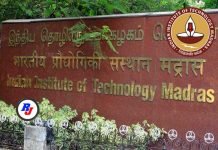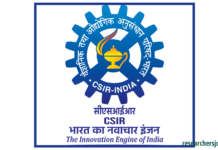Designation/Position- Post-doctoral fellow position at Poland
Nicolaus Copernicus University, Poland › Toruń invites application for Post-doctoral fellow position at Poland from eligible and interested candidates
About- Laboratory of Applied Biophotonics (LAB) is a multidisciplinary research team focused on the development of optical imaging methods for application in biology and medicine. Our research is aimed at a wide variety of problems/scales from single cells to tissues and organs. We excel in optics, electronics and data processing. We develop our solutions starting from theoretical considerations through careful design and optimization to construction of fully functional prototypes. We field test our prototypes in cooperation with biologists and medical doctors, and we have a long experience in transferring our technology to business.
Research/Job Area- Science or Engineering
Location- Nicolaus Copernicus University, Poland › Toruń
Eligibility/Qualification–
I. Formal requirements.
- 1. The Candidate must have a doctoral degree in science or engineering, or receive the doctoral degree prior to the planned starting date of the fellowship.
- 2. The Candidate has received the Ph.D. degree no longer than 7 years prior to the planned employment year in the project, that is in 2014 or later (exceptions apply as listed in documents available for download from a web-page given in the „For more details visit” section of this advertisement).
II. Preferred knowledge, experience and skills. Candidates with any subset of the following skills and experience are sought for the project realization:
- 1. well-developed skills in optical engineering;
- 2. experience in design and construction of biomedical imaging systems including bulk optics, fiber optics, opto-mechanics, optoelectronics, coherent and partially coherent light sources, light detection systems;
- 3. familiarity with optical coherence tomography (OCT) and/or scanning laser ophthalmoscopy (SLO) techniques and associated techniques for imaging systems control and data acquisition;
- 4. familiarity with swept-source technology for OCT applications;
- 5. experience in biomedical imaging;
- 6. good knowledge of optics design software (Zemax preferred, other acceptable);
- 7. experience in C++, Matlab or Python programming;
- 8. strong skills in LabVIEW programming;
III. Other preferred assets.
- – experience in or familiarity with OCT angiography and Doppler OCT imaging (imaging and data analysis methods);
- – knowledge in electronics, circuits and mechanical design;
- – experience in biomedical imaging of human subjects;
- – GPU or FPGA programming skills;
- – familiarity with signal processing and image / biomedical image analysis algorithms;
- – familiarity with the concepts of machine learning methods.
Job/Position Description-
In this project, state-of-the-art swept-source Optical Coherence Tomography (ssOCT) technology will be used to develop methods for in vivo imaging of the human choroid. OCT angiography methods will be developed for visualization of the vascular networks, and OCT velocimetry techniques will be implemented to estimate blood flow velocity in selected choroidal vessels. Image analysis methods will be introduced to enable quantitative analysis of the choriocapillaris architecture and to model the blood circulation this meshwork of vessels. To achieve these goals, a swept-source OCT system will be designed and constructed with the use of a Fourier domain mode-locked (FDML) laser emitting light at 1065nm center wavelength, and operating at a record-speed of 1.6 million sweeps per second. However, the 1.6 MHz imaging rate is not merely incremental progress in the speed at which OCT imaging of the eye fundus can be performed. Our initial tests show that such imaging systems enable break-through in the in vivo imaging of the human choroid. For the first time possibilities open to image in vivo and visualize the architecture of the intricate meshwork of choriocapillaris and to develop methods for its quantitative analysis. Similarly, the vessels of the deeper choroid can be visualized and information about blood flow velocity extracted.
Key responsibilities include:
- 1. Development and implementation of experimental and data acquisition methods for imaging of the human retina and choroid.
- 2. Development and implementation of experimental and data analysis methods for OCT angiography and Doppler OCT imaging of the choroid.
- 3. Imaging of the human subjects in the ophthalmology clinic and analysis of the acquired data.
- 4. Participation in the development of methods for OCT data processing, visualization, and quantitative analysis of the OCT angiography and Doppler OCT images.
- 5. Participation in the development of methods for the analysis and numerical modeling of the blood flow in the imaged vascular systems.
Project title:
- Development of optical coherence tomography methods for imaging and analysis of the structure and function of the choroid in the human eye.
- Funding organization, program and project number: National Science Center of Poland, OPUS 16, 2018/31/B/ST7/03138;
- Project leader: dr hab. Iwona Gorczynska, prof. UMK
How to Apply-
Please submit the aforementioned documents to iwona.gorczynska@fizyka.umk.pl with annotation “WFAiIS-3/KBiIO/2020” in the subject field.
Last Date for Apply– 05 October 2020
Join Our Discussion Forum – Keep your view, share knowledge/opportunity and ask your questions









